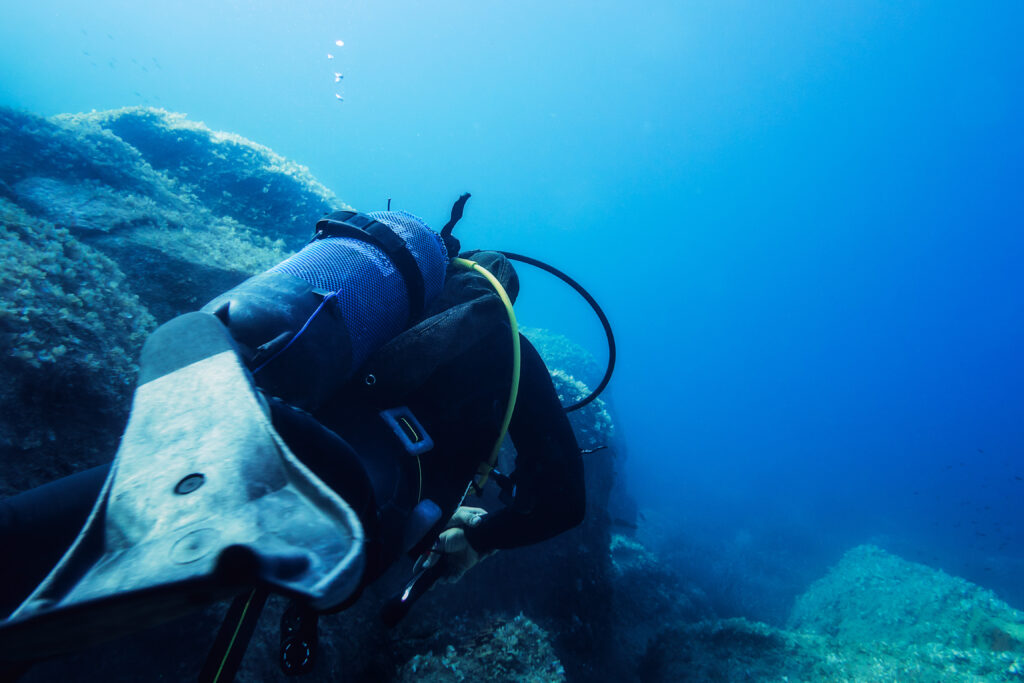What is Residual Nitrogen Time?

The world of scuba diving is one that demands attention to detail, respect for the natural world, and an understanding of physics and physiology principles. One crucial concept in this respect is that of “Residual Nitrogen Time” (RNT), an integral part of dive planning that influences dive safety, duration, and depth. This concept revolves around the body’s nitrogen absorption and release processes, directly tied to decompression sickness prevention.
What is Actual Bottom Time (ABT)?

actual bottom time refers to the total amount of time that elapses from the moment a diver begins their descent until they initiate their ascent. During this period, the diver is submerged underwater, exploring marine life, inspecting underwater structures, or conducting scientific research. The calculation of actual bottom time is a critical aspect of dive planning and dive safety, as it has implications for decompression requirements, air supply management, and physiological considerations.
What is Decompression Illness?

Decompression illness (DI) is a significant condition that affects scuba divers and can have serious health implications if not properly managed. It encompasses a range of ailments resulting from changes in pressure, particularly during ascent after a dive. Understanding decompression illness is crucial for divers, as it helps in preventing, recognizing, and treating this potentially life-threatening condition. This article will cover the physiology, types, causes, risk factors, prevention strategies, diagnosis, treatment, and implications of decompression illness.
What is a Wet Pot?

A Wet Pot is a specialized water-filled hyperbaric chamber used predominantly in experimental work, training, and as a transfer chamber in saturation diving systems. These chambers play a crucial role in the field of hyperbaric operations and scuba diving by providing a controlled environment for divers and researchers. In training scenarios, Wet Pots simulate underwater conditions, allowing divers to practice and prepare for real-life situations. In experimental contexts, they enable scientists to conduct research on the effects of pressure and gases on the human body and various materials. Furthermore, Wet Pots serve as transfer chambers in saturation systems, where they facilitate the safe removal and handling of wet equipment after deep dives. Their versatility and utility make Wet Pots an essential component of modern diving and hyperbaric practices.
What is a Dump Valve?

A dump valve, also known as a bleeder valve, is an essential component of a buoyancy control device (BCD) used in scuba diving. Its primary function is to allow divers to release air quickly from their BCD in certain situations, such as during an emergency rapid ascent. This entry will explore the design, function, and safety measures of a dump valve, with a particular emphasis on its role in ensuring a safe and enjoyable diving experience.
What is Recreational Scuba Diving?

Recreational scuba diving is a popular underwater activity enjoyed by millions of people around the world. It allows individuals to experience the underwater environment firsthand, encountering marine life and underwater landscapes that are typically inaccessible. Unlike commercial or military diving, which focuses on tasks such as underwater construction or defense, recreational scuba diving is primarily for enjoyment and adventure. It involves using a self-contained underwater breathing apparatus (scuba) to breathe underwater, enabling divers to spend extended periods submerged. This activity has grown significantly in popularity due to its appeal to adventurers and nature enthusiasts alike.
What is Trimix?

Trimix is a specialized breathing gas mixture used by technical divers to safely reach greater depths than what is achievable with air or nitrox. Comprising oxygen, nitrogen, and helium, trimix helps mitigate the risks associated with deep diving, such as nitrogen narcosis and oxygen toxicity. By reducing the proportion of nitrogen and oxygen in the breathing mix, trimix allows divers to explore depths well beyond recreational limits while maintaining a safer physiological profile.
What is a No Stop Dive?

A no stop dive, also known as a no decompression dive, is a type of scuba diving where divers can ascend directly to the surface without having to make mandatory decompression stops. These dives are characterized by staying within certain depth and time limits to avoid the need for decompression, which occurs when dissolved gases, primarily nitrogen, form bubbles in a diver’s body during ascent. The practice is crucial for recreational diving as it emphasizes safety and proper planning. Understanding the concept and adhering to the guidelines can prevent decompression sickness, making no stop dives a fundamental aspect of safe diving practices.
What is Saturation?

Saturation, in the context of scuba diving, refers to the state where body tissues have absorbed the maximum amount of inert gas they can hold at a given pressure. This concept is crucial for divers, especially those engaging in deep or prolonged dives. Understanding saturation helps divers manage their exposure to high-pressure environments and ensures they follow appropriate decompression protocols to avoid decompression sickness (DCS). This article delves into the basic principles of saturation, the specifics of saturation diving, its physiological implications, decompression strategies, technological aspects, and safety protocols.
What is a Repetitive Dive?

A repetitive dive is a dive that takes place after a previous dive within a certain period, usually within the same day. The critical aspect of a repetitive dive is the residual nitrogen that remains in the diver’s body from the previous dive. This residual nitrogen affects how subsequent dives are planned and executed to avoid decompression sickness, commonly known as “the bends.” Understanding repetitive dives is essential for divers to manage their dive profiles safely and to maximize their underwater experience without compromising their health.
